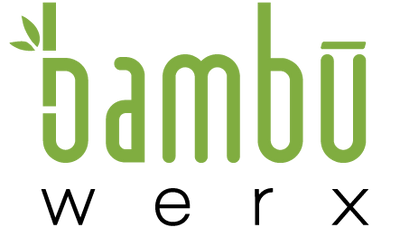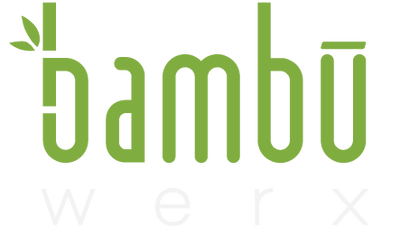#TheWerk - How to Set S.M.A.R.T. Running Goals
Today's #TheWerk post is brought to you by Mwangi Gitahi (@CoachMwangi). Mwangi, originally from the Kenyan Highlands, is a long-time runner and USATF coach who resides in New Bedford, MA. For more about Mwangi, see our Athlete of the Week post here.
------------------------------------------------------
Over the past eight seasons I’ve had the privilege of working with competitive adults, as well as high school track & field and cross country athletes. I manage their training as they work their way through demanding competition schedules, all while balancing home and work life. Some of the runners I coach have already put in the necessary running miles required to build a strong foundation and allow them to compete at a high level, while others have not.

Once each season is over, I sit down with my adult clients individually, and with my fellow coaches for the high school programs collectively, to come up with new race goals for the next season. We also create a plan for getting the athletes better prepared for competition once the new season rolls around. How do we do it? We work backwards, considering all of the relevant factors that can affect an athlete’s training (family, jobs, trips, resources, support team etc.), and come up with a S.M.A.R.T. plan. In the process, we try to be realistic about how much time they have available to commit to running, how often they should train within that time frame, and how we can progress them (and measure that progress) in order to be ready to compete when the season begins.
As we all know, setting S.M.A.R.T. goals is a methodology used very often in a business context, but it can also be applied to any situation that involves goal-setting, including running! Your running goals should be Specific, Measurable, Achievable, Realistic and Time-bound. It can be overwhelming to think about it all at once, so in order to simplify the process while still adhering to these guidelines, here are three things you should always ask yourself:
- Where have you been?
How has your running been lately? How many miles have you been running and how consistent have you been? Are you recovering from any injuries and if so, have you given yourself enough opportunity to fully recover from the injury? When was the last time you ran a race and how well did you do? How did it feel?
Knowing where you have been with your running allows you to put things into perspective. If you ran a marathon in September but haven’t run consistently since then, or put in the necessary speed and strength work, you may not be ready to set that next personal best marathon in March or April. It may be better to reevaluate your expectations and use a shorter race as a benchmark. Then, afterwards, you can set a more realistic goal WHILE you train smart and also avoid injury.
“Running speed and fitness develops over time so you should always take a longer-term approach.”

- Where would you like to go?
What would you like to accomplish next season? What do you want to race next and when? Does it make sense given the distances you have raced in the past and the times you have put up?
If you are a road athlete and you have only raced 5Ks and 10Ks before, it may not be time to run a marathon. Instead, look to test yourself in the half marathon distance to see how your body responds to that distance, and then plan a future full marathon. Targeting the half first will tell you a lot about how well you can handle running a full marathon.
If your 5K PB is 22:00 and you want to break 20:00 it might take more than one season of running to do so, as bad as you want to break that 20-minute barrier! Running speed and fitness develops over time, so you should always take a longer-term approach. Set smaller goals first, for example dropping your time by 30 seconds to a minute next year and then proceed from there. These smaller goals will be easier to achieve while working toward the bigger goal of breaking 20:00, and the bigger goal won’t seem as far away or as daunting as it might seem right now.
“The best way to become a better runner is to run more, plain and simple.”

- How will you get there?
This is the most important question to answer. What I like to ask is a few smaller questions to help come up with a plan:
How much time do you have before your next race?
How often can you train per day/week in that timeframe?
What mileage (or mileage range) do you need in order to achieve your goal?
Can you realistically get to this mileage before your next race, given the time constraints you have, all while maintaining a healthy mileage progression?
Do you have an efficient way of tracking, measuring and evaluating your progress?
Some of my more experienced runners have opted to run twice a day in the past,in order to reach their mileage goals. The bottom line is that they found a way to make it happen because achieving their running goals was a top priority. Obviously this kind of training schedule isn’t suitable for everyone, but the idea is the same. It all depends on what you can realistically do, and how important your goal is to you.
The best way to become a better runner is to run more consistently, plain and simple. Doing this gives you the best possible chance to succeed. In order to ensure that you are meeting your goals, layer on a plan that is specific enough, has results that can be measured, is realistic and is within a specific timeframe.

Keep doing #thewerk and don’t hesitate to ask me about any of these guidelines of running goal-setting.
Coach Mwangi - coachmwangi@gmail.com
Run better. Run smarter. Run for life.







I learned so much from Coach Mwangi’s systematic approach. One year he had us post our New Year’s Run Resolutions. It was helpful to see the variety of run pals’ goals. We worked on them step by step and I achieved mine – not to be last in a local race as I was the year before. The comeraderie was great and supportive.
Leave a comment